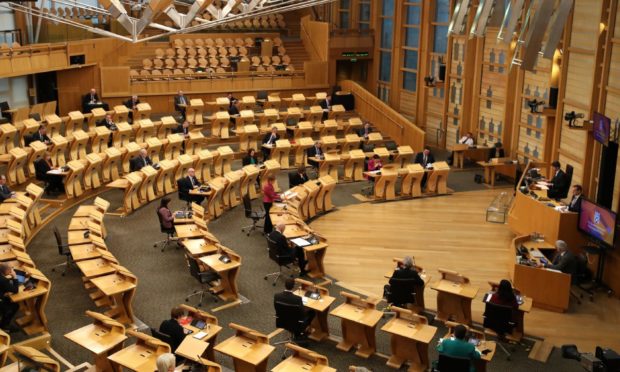It is 23 years since the passing of the Scotland Act at Westminster, which led to the establishment of the Scottish Parliament in Edinburgh the following year.
And given recent events, it may now be time for reflection on how the Act is working in practice. Holyrood was designed as a unicameral legislature, a single body, with scrutiny and amendments to legislation being undertaken by what was supposed to be a powerful committee system.
Those of us who have been forced to sit through various committee sessions over the years have known for some time that this system is unfit for purpose. The problem was brought into sharp public focus this month with the high-profile appearance of First Minister Nicola Sturgeon before the Committee on the Scottish Government Handling of Harassment Complaints. Thanks to partisan, soft-ball questioning by the majority SNP members and frankly, some political grandstanding by opposition representatives, the committee got nowhere, and the first minister was able to emerge virtually unscathed, having skilfully avoided any awkward pitfalls by claimed lapses of memory and in some cases obfuscation.
It confirmed what many observers have believed for years; that the current committee system at Holyrood needs an overhaul. But how could that be done? Here’s a radical, if controversial solution – a second chamber. Two houses are the norm in parliaments of the majority of developed democracies: the United Kingdom, the United States, Germany, France and so on. It need not be huge, or even full-time, so could be done at relatively little cost.
The closest analogy to Scotland may be found across the water in Ireland. There, the Dail, the elected parliament, was established in 1919, but a second chamber, the Seanad Eireann, was added three years later. Its 60 members are supposed to be the great and good of the country, men and women with experience and depth of knowledge. In Ireland, these senators are elected in a variety of ways. Eleven members are directly appointed by the Taoiseach – the prime minister – and 12 by the various Irish universities. The other senators are appointed by votes of special panels for their expertise in specific fields – culture, industry, administration, agriculture, and so on.
The Seanad has limited revising powers and, like the unelected House of Lords at Westminster, can see its recommendations and amendments overruled by the Dail. But, like the Lords, it serves a very useful purpose, highlighting gaps in legislation and suggesting improvements.
Here in Scotland, as we approach another Holyrood election, we’re about to lose some of our most able and experienced politicians. Now whether you agree with their politics or not, figures such as Michael Russell, Adam Tomkins, Roseanna Cunningham, Jeane Freeman, Alex Neil, Bruce Crawford, Ruth Davidson, Ken Macintosh, Iain Gray and Neil Findlay will be a loss to Holyrood when they retire later this month. Surely a second, part-time chamber would be an ideal setting in which they could use their wisdom to help improve legislation proposed in the main chamber.
The 1999 Club: 12 founding MSPs tell the Scottish Parliament’s story
People with specific knowledge could be appointed – from the arts, food and drink, farming, the law, tourism and so on. I know a proposal such as this would provoke howls of outrage from those who would see it as unnecessary and costly. And I admit the chances of a second chamber ever being established, despite the logic of its near necessity, are remote. That’s because it would have to be done by amending the Scotland Act, which would entail Westminster legislation. And that, frankly, is not going to happen.
However, that is not a reason to bury an idea whose time, I believe, has come. Something has to be done to replace this ineffective committee system. And while we’re at it, if the Scotland Act was to be opened up at Westminster to accommodate this change, why not use the opportunity to scrap the current Holyrood voting system? While it does give an approximate seat reflection on the number of votes cast for each party, the d’Hondt top-up list system also gives us two classes of MSP, constituency and list, no matter how often the parliamentary authorities claim they are of equal stature.
It also allows the parties far too much power over who is elected to parliament. Recent behind-closed-doors shenanigans by the SNP reserving places for members of specific groups has effectively blocked the chances of many potential list candidates ever being elected, while virtually guaranteeing seats for others.
It may well be time for an overhaul of the Scotland Act. Let’s learn the lessons of the past couple of decades. Replacing the current electoral system with multi-member wards elected by alternative vote and the addition of a second chamber would be, I suggest, good starting points.
Campbell Gunn is a retired political editor who served as special adviser to two first ministers of Scotland










